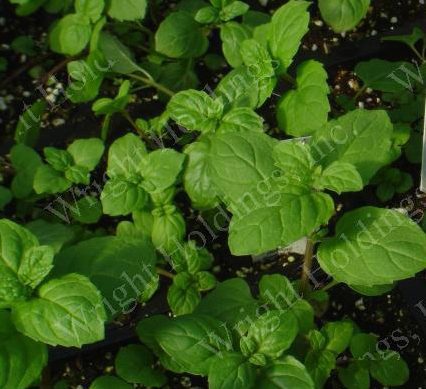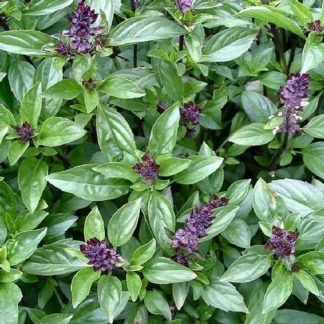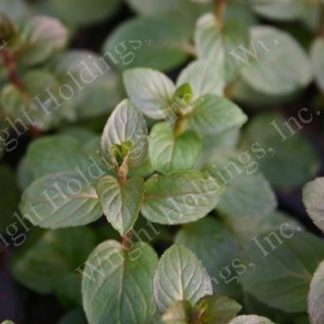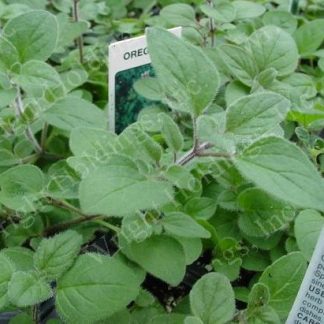Description
Mentha piperita (Peppermint): A Classic Herb for Flavor, Health, and the Garden
Peppermint, botanically known as Mentha piperita, is one of the most cherished herbs in the world. Its fresh, cooling aroma and invigorating flavor have made it a favorite in kitchens, gardens, and home remedies for centuries. A member of the mint family (Lamiaceae), peppermint is celebrated not only for its beauty in the garden but also for its versatility in cooking, medicine, and aromatherapy.
The Look and Fragrance of Peppermint
Peppermint is a fast-growing perennial with striking dark green leaves that often carry a purplish tint. The leaves are lance-shaped and slightly serrated, releasing a powerful minty scent when brushed or crushed. This aroma comes from its high menthol content, which gives peppermint its signature cooling sensation.
In the summer months, peppermint blooms with clusters of delicate lavender to pale pink flowers. These blooms are more than just ornamental — they attract bees, butterflies, and other pollinators, adding life and movement to your garden. The plant typically grows 12 to 24 inches tall and spreads readily, forming lush patches of greenery.
Growing Peppermint in Your Garden
Peppermint is one of the easiest herbs to grow, making it perfect for beginners and experienced gardeners alike. Its vigorous nature means it needs some containment to keep it from overtaking garden beds.
Ideal Growing Conditions
- Sunlight: Full sun to partial shade
- Soil: Moist, rich, and well-draining soil
- Watering: Keep the soil evenly moist, especially during hot weather
- Hardiness: Thrives in USDA zones 3–11
Container Gardening Tip
Because peppermint spreads aggressively through underground runners, many gardeners prefer to grow it in pots or containers. This helps prevent it from crowding out neighboring plants.
Culinary Uses of Peppermint
Few herbs can match the culinary versatility of peppermint. Its leaves can be used fresh or dried, adding a refreshing burst of flavor to both sweet and savory dishes.
- Desserts and Drinks: Perfect for teas, iced beverages, candies, and baked goods
- Savory Dishes: Adds brightness to lamb, salads, and chutneys
- Garnishes: Fresh leaves elevate fruit platters, cocktails, and desserts
A simple peppermint tea made by steeping fresh leaves in hot water is soothing and aromatic, offering both flavor and gentle digestive relief.
Medicinal and Aromatic Benefits
Peppermint’s value extends far beyond the kitchen. For generations, it has been used in traditional medicine and aromatherapy.
- Digestive Aid: Known for easing indigestion, bloating, and nausea
- Headache Relief: Peppermint oil applied to temples can reduce tension headaches
- Respiratory Support: Its menthol vapors can help clear nasal passages
- Stress Reduction: The cooling aroma has a calming effect on the mind
Peppermint essential oil is widely used in balms, chest rubs, and massage oils, providing soothing relief for tired muscles and sinus discomfort.
Ecological Benefits
Peppermint doesn’t just serve humans — it benefits the entire garden ecosystem. Its flowers are a magnet for pollinators like bees and butterflies. At the same time, the strong scent of peppermint can deter certain pests, making it a helpful companion plant in herb and vegetable gardens.
Harvesting and Storing Peppermint
Regular harvesting encourages bushier growth and ensures a steady supply of fresh leaves.
How to Harvest
- Snip stems just above a leaf node
- Harvest in the morning when oils are most concentrated
Storing Options
- Use fresh leaves immediately for best flavor
- Dry leaves in a cool, shaded place for long-term storage
- Freeze leaves in ice cubes for quick use in drinks and recipes
Why Peppermint Belongs in Every Garden
Peppermint is more than just a pretty herb. It’s a workhorse in the garden and the home. It refreshes drinks, brightens meals, soothes ailments, and supports pollinators — all while being easy to grow and maintain. Whether planted in a raised bed, tucked into containers, or thriving along a walkway, peppermint is an herb that rewards you season after season.
A Fragrant Herb Worth Celebrating
Bringing peppermint into your life is a simple way to add beauty, flavor, and healing to everyday moments. Its uplifting aroma, medicinal properties, and vibrant greenery make it an essential herb for gardeners, cooks, and herbal enthusiasts alike.




